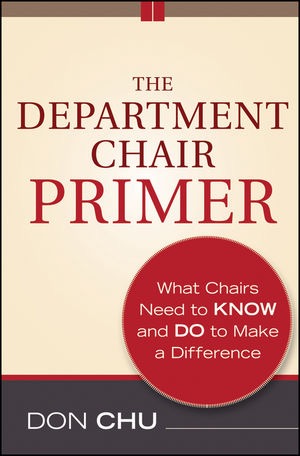leadership
Select an item by clicking its checkbox
Date Reviewed: August 21, 2020
In order to fulfill their missions, institutions sometimes have to change. Leaders guiding communities through such moments or eras need instructional resources, and we do them a disservice when we oversimplify the work of change leadership. “Ten Easy Solutions” do not exist, and suggesting they do causes leaders to feel discouraged, like there must be something wrong with them when they fear, falter, or fail. Change leadership is hard, sometimes even painful, but it is not impossible when approached with appreciation for complexity and a broad repertoire. Dynamic Discernment: Reason, Emotion, and Power in Change Leadership chops through the thicket of change dynamics, opening up three different pathways:
• Reason, where change leaders educate their communities and plot out concrete actions;
• Emotion, where leaders manage the reactivity that change can incite in a separate-yet-connected style of engagement; and
• Power, where leaders take seriously the ways in which grass-roots and top-down forms of authority can find common ground.
Sarah Drummond has experienced change leadership firsthand in numerous contexts, and this book uses abundant illustrations and examples, but Dynamic Discernment is best understood as a new and multidisciplinary theory of change. Although aimed at religious leaders, any who serve a mission-driven institution will find resonance. The book provides guidance for (1) recognizing the dominant dynamic at work in a community experiencing change and (2) choosing leadership practices accordingly. (From the Publisher)
Date Reviewed: June 21, 2021
Thoroughly revised, updated, and expanded, this classic resource covers a broad spectrum of timely topics and is now truly more than a guide—it\'s a much-needed desk reference that tells you "everything you need to know to be a department chair." The Essential Department Chair contains information on topics such as essentials of creating a strategic plan, developing and overseeing a budget, key elements of fundraising, preparing for the role of chair, meeting the challenges of mentoring to increase productivity, and creating a more collegial atmosphere. The book also explores the chair\'s role in the search process, shows how to conduct a successful interview and what to do when it\'s time to let someone go. And the author includes suggestions for the best practices to adopt when doing an evaluation or assessment.
The Essential Department Chair, Second Edition, contains a wealth of new, realistic case studies to equip leaders in this pivotal position to excel in departmental and institutional life. (From the Publisher)
Date Reviewed: June 21, 2021
In this second edition of his classic resource, Don Chu outlines the proven ideas and strategies new department chairs need in order to do their jobs well. Thoroughly ...
In this second edition of his classic resource, Don Chu outlines the proven ideas and strategies new department chairs need in order to do their jobs well. Thoroughly revised and updated, The Department Chair Primer contains information that addresses the current pressures and challenges in higher education and offers practical suggestions for responding to them.
Filled with illustrative examples, the book gets straight to the heart of challenges and issues. Each chapter details a particular problem, includes a brief introduction to the topic, and provides tips on how to deal with the situation. Covering a wealth of topics, The Department Chair Primer
-Explores the chair\'s role as department leader
-Offers suggestions for handling stress and conflict
-Includes information on budgeting, resource management, and development
-Contains strategies for professional development, people management, and working with challenging personnel
-Presents ideas for handling department communications, student development, and strategic positioning
Written in a concise and accessible manner, The Department Chair Primer is an ideal resource for the busy new department chair. (From the Publisher)

A Guide for Leaders in Higher Education: Core Concepts, Competencies, and Tools
Date Reviewed: August 15, 2017
Brent Ruben, Richard De Lisi, and Ralph Gigliotti, all colleagues at Rutgers University, combine their teaching, research, and work expertise into a volume meant to be a “guide and a resource” (xviii) not only for current but also aspiring leaders, and those in less formal leadership roles on college campuses. Preceded by a pithy foreword by Doug Lederman, editor of Inside Higher Ed, the work is both frank and optimistic, a common characteristic of Brent Ruben, a practiced author in reference works for higher education leaders. The Strengths, Weaknesses, Opportunities, and Threats (SWOT) analysis that constitutes the foreword sets a tone that pervades this book: challenges abound in the current landscape of American higher education, but informed and prepared leaders can respond to these challenges and achieve excellence.
The text is divided into four parts. Part One is an overview of issues, opportunities, and challenges faced by institutions and their leaders such as institutional mission (50) and diverse stakeholders (56). Part Two presents theories and literature in response to topics related to leadership like cross-cultural communication (80), and a “comprehensive leadership megamodel” (109). Part Three adds practical tools and applied models to the theoretical discussions of common issues alternating between effectiveness on the part of individual leaders and organizational effectiveness, one example being a tool for organizational review and improvement (181). Part Four, the final chapter, concerns the development of leaders in higher education.
The authors’ prescience is on display from the outset of the work when they address the query, whither another book on leadership? Leadership, after all, is one of the more hackneyed subjects in recent decades, no less so in higher education where storied presidents, politicians, journalists, prestigious faculty, and popular commentators have all offered perspectives on the state of higher education and prescriptions for a better way forward. While Ruben, De Lisi, and Gigliotti spend a notable portion of the text describing higher education as they see it, their aim is to provide practical resources to current and future leaders, and in this they were successful.
As such a resource, contingent upon the notions of developing competency- and communication-based leadership, A Guide for Leaders in Higher Education succeeds in providing accessible and useful resources to individuals across different leadership roles. While the authors took great care to ground their writing in case studies, hypotheticals, appendices, and applied models, at times it reads more like an introduction to a higher education textbook than an instrumental guide for those currently in leadership positions. As a midpoint between textbook and reference work, it is still successful at both and provides a clear and unbiased background to issues facing current leaders. For religion faculty in discrete or informal roles at their universities, the authors provide a distinctly helpful, perhaps overlong, review of leadership techniques, tools, and competencies. For current department heads and aspiring administrators, the text will assist in becoming conversant in the topics crisscrossing campuses and systems to better respond to today’s challenges.

Dancing in the Rain: Leading with Compassion, Vitality, and Mindfulness in Education
Date Reviewed: June 23, 2017
Former dean of the Harvard Graduate School of Education, Jerome Murphy writes as a seasoned educator about how to best care for yourself as a teacher in the midst of daily stress. This book applies to the stress of academia as well as ministry. It is a book I would recommend to students preparing to teach and to serve in ministerial vocations. Murphy highlights the source of stress that afflicts educators: our own responses to stress. When difficult situations arise, we tend to respond in one of three self-defeating ways: ruminating on the negative, rebuking ourselves, or resisting our emotions. Murphy draws from the literature on mindfulness to point out the health benefits of becoming aware of our emotions in the moment and accepting our shortcomings.
As an alternative to the cycles of rumination, rebuke, and resistance, Murphy offers a list of instructions that help educators focus on their own values, summarized by the acronym “MY DANCE.” Each letter represents a phrase discussed in the following chapters. “Minding your values” advocates understanding our own life goals and naming our best version of ourselves. Knowing who we want to be helps us evaluate whether our actions are in line with our values. The next chapter, “Yield to now,” captures the importance of in-the-moment mindfulness, trying to stay present to ourselves and others, and includes exercises for practicing mindfulness. “Disentangle from upsets” also highlights the role of mindfulness in preventing us from being consumed by our stress. The chapter titled “Allow unease” instructs readers to attend to the discomfort of negative feelings. “Nourish yourself” emphasizes intentional self-care and practices of gratitude, while “Cherish self-compassion” takes self-care to a deeper level. The last element of the acronym is “Express Feelings Wisely.”
In each of these chapters, Murphy brings in personal anecdotes from years of administration and leading workshops for teachers and school principals. He intersperses these lessons with some of his own personal struggles, such as his wife’s diagnosis with Alzheimer’s disease. In these glimpses of personal sharing, the reader gets a sense of how these practices of self-care have been imperative for someone who has transitioned from being a dean of a Harvard graduate school to a full-time caregiver for his wife of nearly fifty years as she slowly loses her ability to recognize him.
This book draws our attention to the humanity of all educators: we are not simply vessels of information or mediums of higher learning. Each person has his or her own struggles in living daily life, on top of the demands of our teaching vocations. Attending lovingly to our limitations and caring for ourselves in the midst of these struggles is crucial if we are to be effective as teachers and healthy individuals. I recommend this book to anyone who wants to learn how to better care for themselves in the midst of life’s demands.


